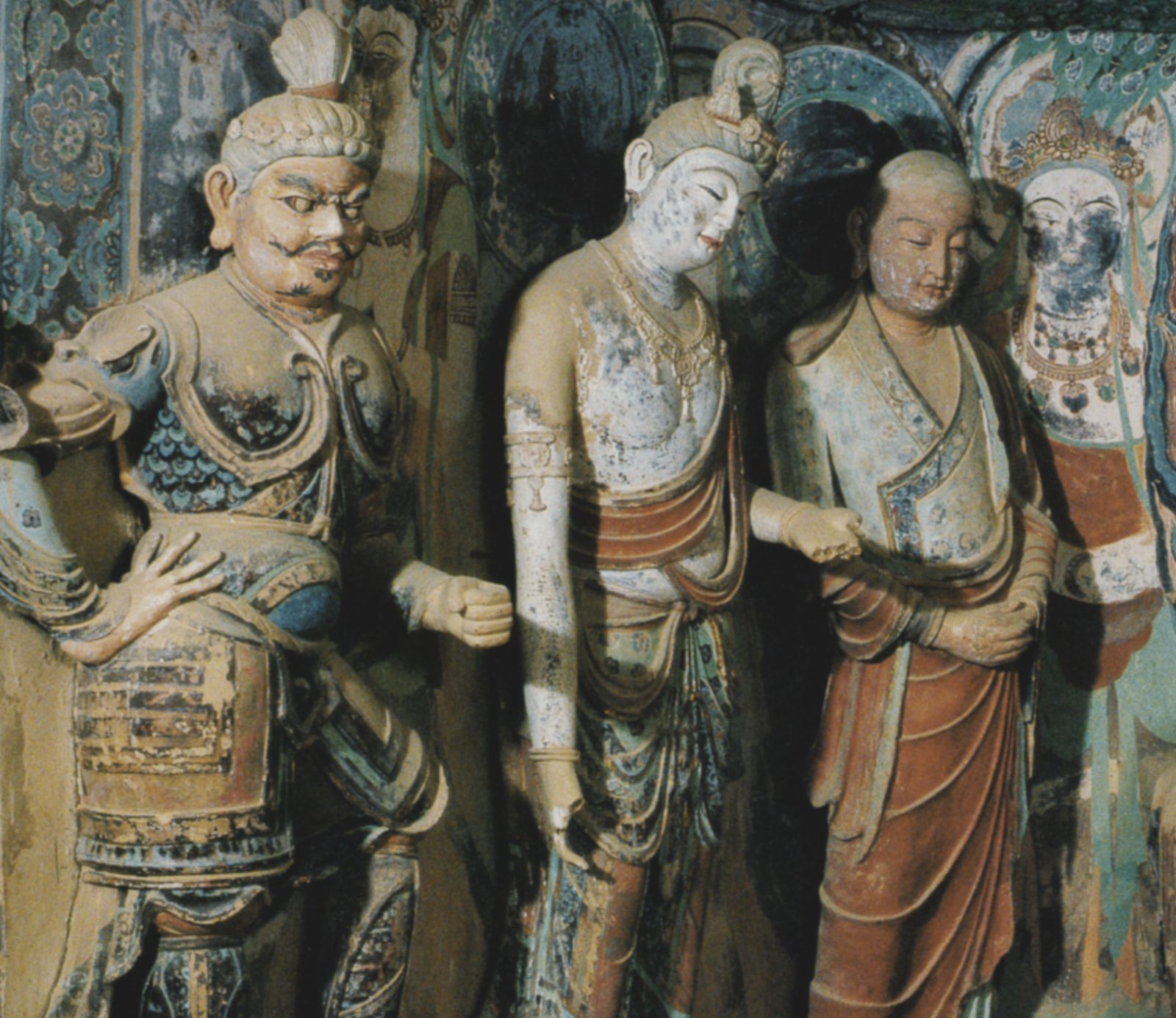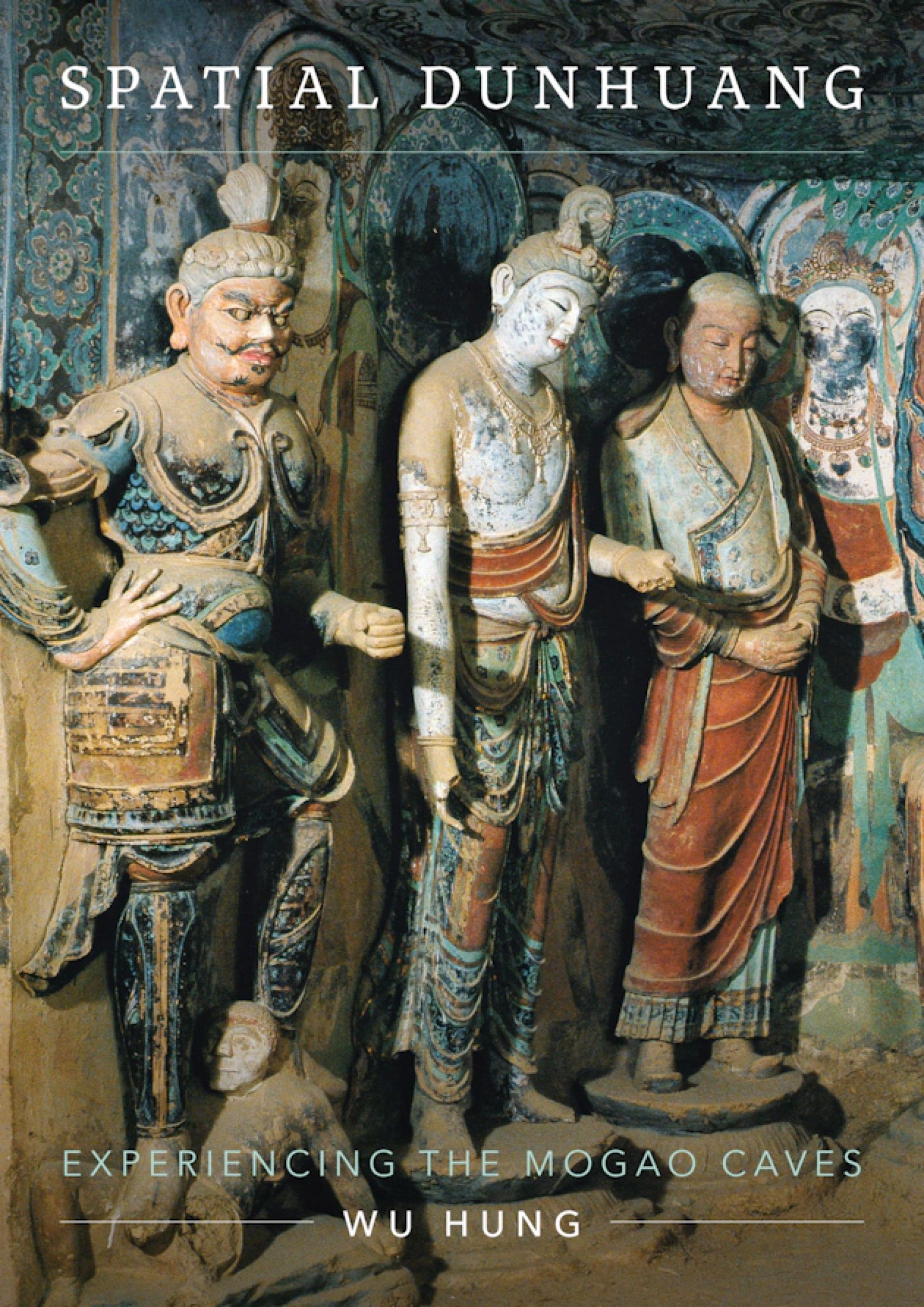Seminar
Wu Hung:
Spatial Dunhuang
Book Discussion with Wu Hung (University of Chicago) on Spatial Dunhuang: Experiencing the Mogao Caves (Seattle: University of Washington Press, 2023)

Detail of the book cover of Spatial Dunhuang: Experiencing the Mogao Caves by Wu Hung.
Constructed over a millennium from the fourth to fourteenth centuries CE near Dunhuang, an ancient border town along the Silk Road in northwest China, the Mogao Caves comprise the largest, most continuously created, and best-preserved treasure trove of Buddhist art in the world. Previous overviews of the art of Dunhuang have traced the caves' unilinear history. Spatial Dunhuang by Wu Hung examines the caves from the perspective of space, treating them as physical and historical sites that can be approached, entered, and understood sensually. It prioritizes the actual experiences of the people of the past who built and used the caves. Five spatial contexts provide rich material for analysis: Dunhuang as a multicultural historic place; the Mogao Cave complex as an evolving entity; the interior space of caves; interaction of the visual program with architectural space; and pictorial space within wall paintings that draws viewers into an otherworldly time.
Wu Hung has published widely on both traditional and contemporary Chinese art. His interest in both traditional and modern/contemporary Chinese art has led him to experiment with different ways to integrate these conventionally separate phases into new kinds of art historical narratives, as exemplified by his Monumentality in Early Chinese Art and Architecture (1995), The Double Screen: Medium and Representation of Chinese Pictorial Art (1996), Remaking Beijing: Tiananmen Square: the Creation of a Political Space (2005), A Story of Ruins: Presence and Absence in Chinese Art and Visual Culture (2012), and Zooming In: Histories of Photography in China (2016). Several of his ongoing projects follow this direction to explore the interrelationship between art medium, pictorial image, and architectural space, the dialectical relationship between absence and presence in Chinese art and visual culture, and the relationship between art discourse and practice. Wu Hung has received many awards for his publications and academic services, among which he is most proud of the Faculty Award for Excellence in Graduate Teaching at the University of Chicago (2007) and the Distinguished Teaching Award from the College of Art Association (2008). Wu Hung is Director of the Center for the Art of East Asia, and Consulting Curator of the Smart Museum of Art at the University of Chicago. He is an elected member of the American Academy of Arts and Sciences and the American Philosophical Society, and sits on the boards and advisory committees of many research institutes and museums in the United States and China.

14 June 2023, 3:00pm
Internal event
Notice
This event will be documented photographically and/or recorded on video. Please let us know if you do not agree with the Kunsthistorisches Institut in Florenz using images in which you might be recognizable for event documentation and public relation purposes (e.g. social media).


